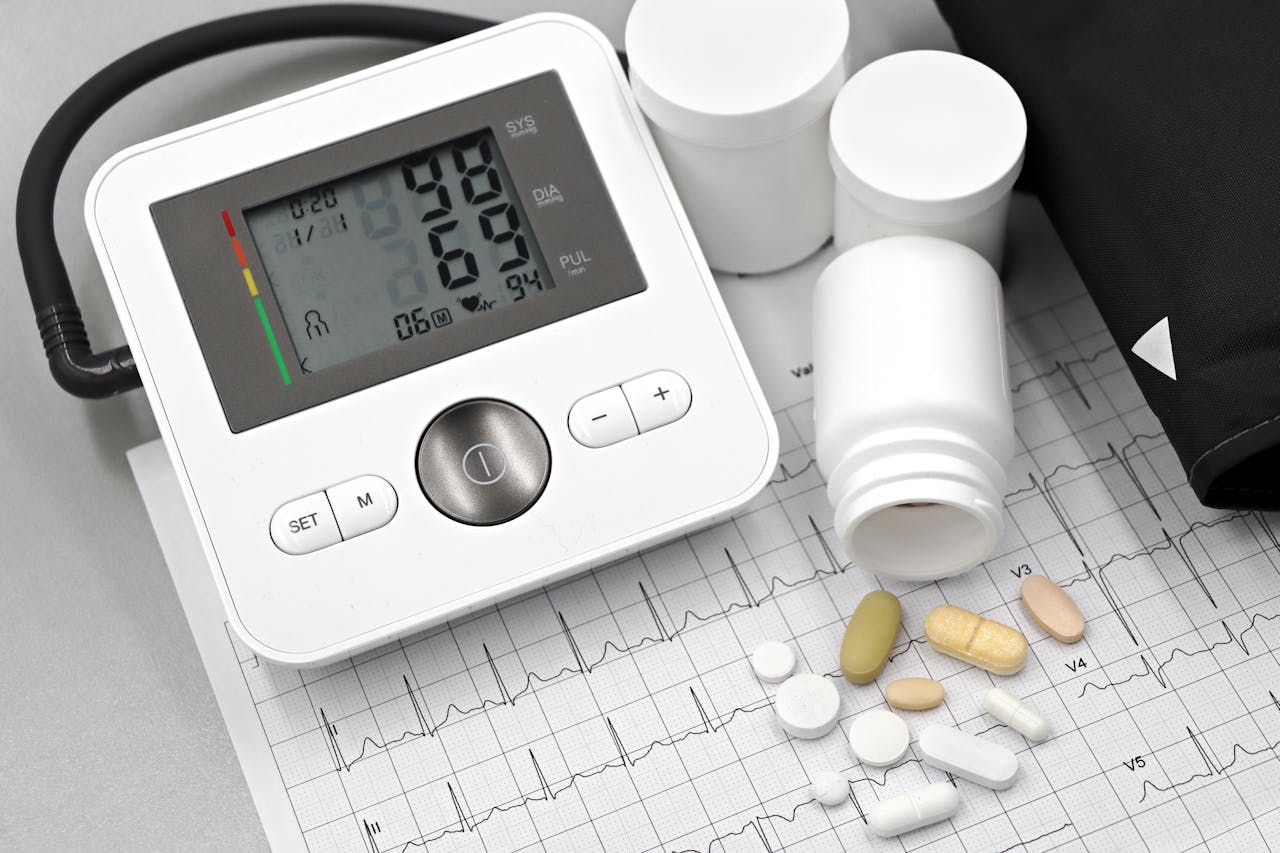AI Brand-Safety Checklist for Medical Devices Ecommerce

Key Takeaways
- FDA classification compliance is critical - AI must understand Class I, II, and III device restrictions and clearance requirements
- Prescription vs. OTC distinctions matter - AI should never recommend prescription devices to unauthorized users
- Medical claims require substantiation - AI must distinguish between device claims and prohibited medical advice
- Professional verification is essential - AI needs to enforce healthcare professional requirements for certain devices
- Adverse event protocols are mandatory - AI must escalate serious device-related health concerns immediately
- Platform restrictions vary widely - AI responses must adapt to strict marketplace policies on medical devices
- International regulations differ - AI should understand global compliance requirements for device sales
The medical device industry operates under some of the strictest regulatory oversight in ecommerce. With FDA classifications ranging from simple bandages to life-sustaining equipment, the compliance landscape is both complex and unforgiving.
One AI mistake about device indications, an inappropriate recommendation to an unqualified user, or failure to recognize a serious adverse event can trigger FDA enforcement actions, result in product recalls, or expose your business to significant liability. Your AI isn't just selling products—it's navigating a regulatory environment where patient safety and legal compliance intersect at every interaction.
Here's your essential checklist to ensure your AI interactions maintain the highest standards of safety and compliance while serving healthcare professionals and consumers who depend on accurate, responsible guidance. Learn more about AI for healthcare and medical device industries and specialized compliance requirements.
1. FDA Classification and Clearance Awareness
Your AI must understand the difference between Class I, II, and III medical devices and their respective FDA clearance requirements. It should never make claims about device efficacy that exceed FDA-cleared indications or suggest off-label uses. Train your AI to reference only FDA-approved labeling and cleared indications for each device class. Understanding FDA's device classification system is fundamental for compliance.
2. Prescription vs. Over-the-Counter Device Restrictions
Configure your AI with strict guardrails around prescription medical devices. It must verify healthcare professional credentials before recommending prescription devices and immediately redirect unauthorized users to appropriate channels. For OTC devices, ensure your AI still maintains appropriate usage guidance and contraindication awareness.
3. Healthcare Professional Verification Requirements
Implement robust verification protocols for devices restricted to healthcare professionals. Your AI should never bypass professional licensing requirements or suggest workarounds for credential verification. When healthcare professionals cannot be verified, your AI must redirect to appropriate sales channels or customer service representatives.
4. Medical Claims vs. Device Claims Compliance
Train your AI to distinguish between permissible device claims based on FDA clearance and prohibited medical claims. It can discuss FDA-cleared indications but must never suggest that devices can diagnose, treat, or cure conditions beyond their approved uses. Built-in guardrails ensure every recommendation stays within regulatory boundaries.
5. Age and Contraindication Safety Protocols
Your AI should be programmed with comprehensive contraindication databases and age restrictions for medical devices. It must never recommend devices to patients with contraindicated conditions and should immediately escalate when customers mention relevant medical conditions or medications that might affect device safety.
6. Adverse Event Recognition and Mandatory Reporting
Configure your AI to recognize potential adverse events and immediately escalate serious device-related health concerns. It should document reports, advise discontinuing device use when appropriate, and ensure proper adverse event reporting channels are followed. Your AI must never downplay device-related safety concerns. Understanding FDA's Medical Device Reporting requirements is critical for patient safety.
7. Quality System and Manufacturing Compliance
Ensure your AI only makes verifiable claims about device quality, manufacturing standards, and certifications. When customers ask about quality assurance, your AI should reference documented certifications, FDA registration numbers, and quality system compliance rather than making unsupported quality claims.
8. Platform-Specific Medical Device Policies
Different marketplaces have varying restrictions on medical device sales. Your AI needs to understand each platform's specific policies and adjust recommendations accordingly. Some platforms prohibit certain device classes entirely, while others require additional disclosures or professional verification. Learn how AI improves compliance across different sales channels.
9. International Regulatory Compliance
Your AI should understand that medical device regulations vary significantly by country. It must check both device approvals and import restrictions before recommending international shipping, ensuring compliance with CE marking requirements, Health Canada approvals, or other international regulatory frameworks.
10. Labeling Accuracy and Required Disclosures
Train your AI to never contradict FDA-approved labeling and to include all required device disclosures. It should reference user manuals, safety warnings, and proper usage instructions while ensuring customers understand the importance of following manufacturer guidelines exactly as specified. Learn how AI improves accuracy in product information delivery.
11. Professional Use vs. Consumer Device Distinctions
Your AI must clearly distinguish between devices intended for professional healthcare settings and those approved for consumer use. It should never suggest that consumer-grade devices can substitute for professional medical equipment or recommend professional devices for home use without proper training and oversight.
12. Emergency and Critical Device Protocols
For life-sustaining or critical medical devices, your AI should have specialized protocols that prioritize safety over sales. It must provide emergency contact information, stress the importance of backup devices, and ensure customers understand maintenance and replacement schedules critical for device function.
Why Envive Is Built for Brands That Prioritize Brand Safety
In the medical device industry, brand safety isn't just about protecting your reputation—it's about protecting lives. One AI error about device indications, an inappropriate recommendation to an unqualified user, or missed contraindication can have serious health consequences.
Envive's approach to brand safety is specifically designed for the unique challenges of medical device ecommerce. Our AI agents are trained exclusively on your FDA-cleared product data and configured with device-specific compliance protocols that understand the nuances of medical device regulation.
This means:
• No inappropriate device recommendations that exceed FDA clearance or ignore contraindications
• Zero unauthorized professional device sales to unqualified users or unlicensed individuals
• Built-in safety protocols that prioritize patient safety over conversion optimization
• Real-time compliance awareness that adapts to FDA guidance and international requirements
The difference is in our foundation. While generic AI systems might accidentally recommend prescription devices to consumers or suggest off-label uses, Envive creates AI that understands your brand and your regulatory environment.
For medical device brands, this translates to AI that feels knowledgeable and helpful while never compromising on safety or compliance. When a healthcare professional needs device information at 3 AM, they get accurate, regulation-compliant responses that support their clinical decisions—not liability.
The result? No surprises, no violations, no patient safety concerns. Just AI that protects your business while serving the healthcare professionals and patients who depend on your devices. Explore our case studies to see how medical device brands maintain the highest safety standards while driving growth.
The Bottom Line
In the medical device industry, brand safety means ensuring that every AI interaction upholds the same standards of safety and accuracy that healthcare professionals and patients expect from your devices themselves. The regulatory environment is complex, with FDA oversight, international compliance requirements, and platform restrictions creating multiple layers of compliance obligations.
When your AI is trained on your actual device data and configured with medical device-specific guidelines, you create more than just helpful customer interactions. You create a safety-first experience that protects patients, supports healthcare professionals, and maintains the trust that's essential in medical technology.
Because when healthcare professionals and patients trust your AI's accuracy and safety focus, they don't just buy once—they become advocates for your brand's commitment to putting patient safety first.
Frequently Asked Questions
Q: How do I ensure my AI doesn't recommend prescription devices to unauthorized users?
A: Implement robust healthcare professional verification systems that your AI must check before any prescription device recommendations. Configure it to request professional licensing information, NPI numbers, or institutional credentials before proceeding. When verification fails, your AI should redirect to appropriate sales representatives or authorized distributors rather than completing transactions.
Q: What should my AI do when customers ask about off-label device uses?
A: Your AI should only discuss FDA-cleared indications and approved uses for medical devices. When customers ask about off-label applications, it should acknowledge their question while directing them to consult healthcare providers for guidance beyond approved indications. Never suggest uses that exceed FDA clearance, even if published research supports such applications. Reference FDA's device regulation overview for guidance on approved uses.
Q: How can my AI help with device selection while staying within regulatory boundaries?
A: Train your AI to ask qualifying questions about intended use, user qualifications, and clinical requirements before making recommendations. It should reference device specifications, FDA clearance language, and contraindications while encouraging consultation with healthcare providers for clinical decision-making. Focus on matching devices to approved uses rather than making clinical recommendations.
Q: Should my AI mention FDA clearance and device classifications?
A: Absolutely. Your AI should proactively share FDA clearance information, device classification details, and regulatory status when discussing products. This transparency builds confidence and demonstrates regulatory compliance. Train it to explain what different classifications mean and why FDA clearance matters for device safety and efficacy.
Q: How do I handle adverse event reports through my AI system?
A: Program your AI to take any device-related adverse events seriously and immediately escalate to designated personnel responsible for regulatory reporting. It should collect initial information, advise discontinuing device use if appropriate, and ensure proper MDR reporting protocols are followed. Never allow your AI to dismiss or minimize device-related safety concerns.
Q: What should my AI do when customers mention contraindicated conditions?
A: Configure your AI with comprehensive contraindication databases and immediate escalation protocols. When customers mention relevant medical conditions, medications, or circumstances that might contraindicate device use, your AI should immediately recommend consultation with healthcare providers before proceeding. Patient safety must always override sales considerations.
Q: How often should I update my AI's medical device compliance knowledge?
A: Review and update guidelines immediately when FDA guidance changes, device recalls occur, or new safety information emerges. The medical device regulatory landscape evolves with new clearances, safety communications, and enforcement priorities. Subscribe to FDA medical device updates, work with regulatory consultants, and conduct monthly compliance audits to ensure your AI's knowledge remains current with the latest safety and regulatory requirements.

Other Insights

What’s a Realistic Timeline for AI’s “Real” Impact and How Can Brands Avoid Being Left Behind?

Hackathons — Why Companies Need to Invest in Them

What 75,000 BFCM Questions Revealed — And Why Real-Time AI Guidance Is Now Essential
See Envive
in action
Let’s unlock its full potential — together.






